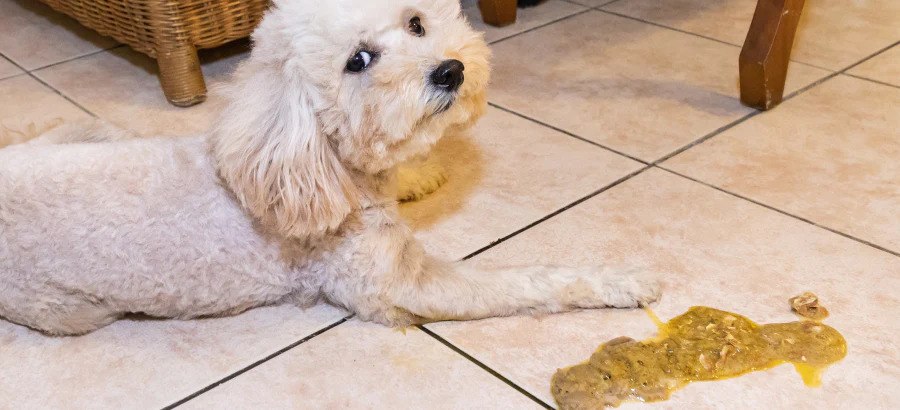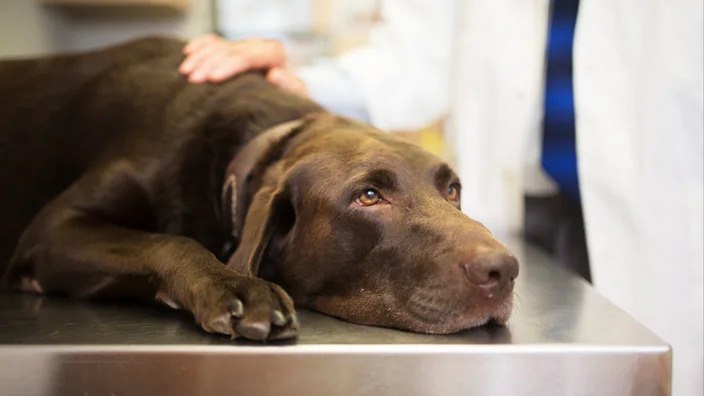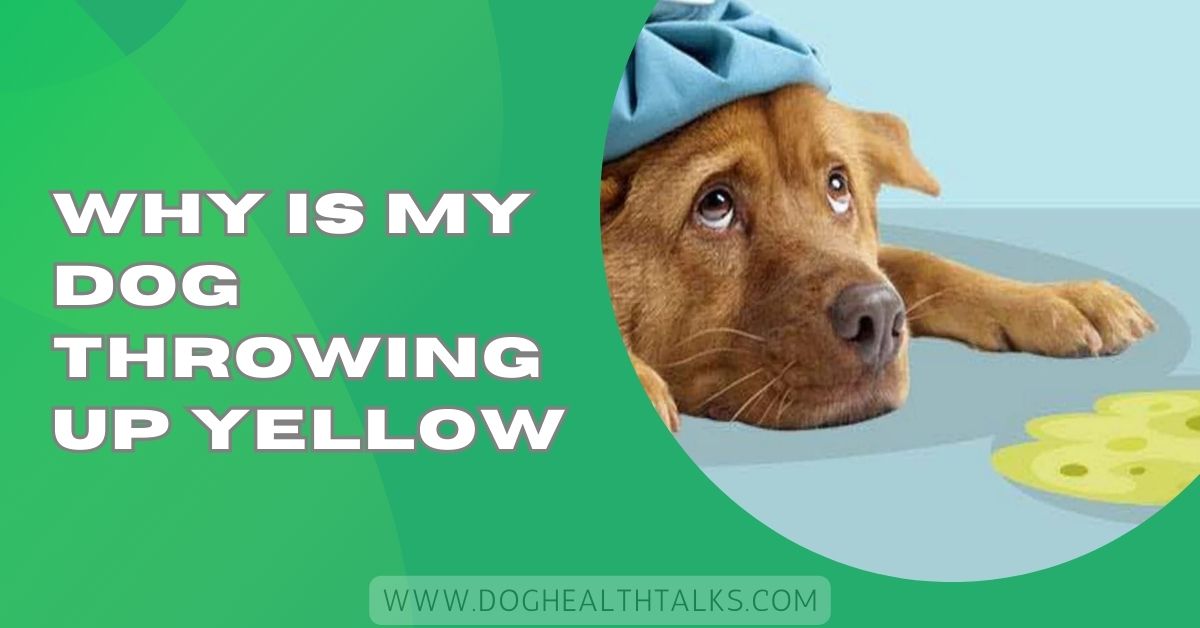When you see your dog vomiting yellow, it can be worrying and confusing. That yellow color usually means bile, a digestive fluid. While sometimes it’s harmless, it could be a sign of an underlying health problem in other cases.
Yellow vomit in dogs often means bile is present from an empty stomach, indigestion, or illness. Causes include bilious vomiting syndrome, infections, pancreatitis, blockages, parasites, or liver disease—always check with a vet if symptoms persist.
In this guide, you’ll learn what yellow bile means, possible causes, when to see the vet, and proven steps to help your dog feel better — so you can respond quickly and confidently.
What Is Yellow Bile in Dogs?
Yellow bile is a fluid made in your dog’s liver and stored in the gallbladder. Its main job is to help break down fats during digestion.
Usually, bile stays in the small intestine, but if your dog’s stomach is empty for too long or something upsets their digestion, bile can flow backward into the stomach and mix with acid.
This irritation can cause vomiting. You might see yellow, sometimes foamy liquid, especially in the morning.
While occasional bile vomit isn’t always dangerous, frequent episodes can mean an underlying issue that needs a vet’s attention. Knowing what it is helps you respond safely and quickly.
What Does Yellow Dog Vomit Mean?
Most of the time, yellow vomit means there’s bile in the mix. Bile is a digestive fluid made by the liver and stored in the gallbladder; it’s released into the small intestine to help digest fats. When bile backs up into the stomach and gets expelled, it can appear yellow to yellow-green, sometimes foamy if it’s mixed with stomach fluid and air.
Yellow vomit can happen:
- First thing in the morning or after a longer-than-usual gap between meals.
- When a dog’s stomach is empty, but still churning acid and fluid.
- With nausea, shown by lip-smacking, drooling, grass-eating, or restlessness before vomiting.
While bile itself isn’t dangerous, why it’s being vomited matters. Sometimes the cause is simple (hunger or a sensitive stomach). Other times, yellow vomit is an early clue to something more serious that needs a vet’s help—like pancreatitis, a foreign body (blockage), toxin exposure, or liver disease.
Why Is My Dog Throwing Up Yellow?

Yellow vomiting has many possible reasons — from mild conditions to serious health issues. Below are the most common causes explained in plain language.
1. Bilious Vomiting Syndrome
This condition happens when bile builds up in your dog’s empty stomach, usually overnight or before a meal.
The bile irritates the stomach lining, causing morning vomiting that’s yellow or foamy. You might also notice drooling, lip-licking, or reduced appetite before breakfast.
It’s uncomfortable but not usually dangerous if treated. Simple fixes, like feeding smaller, more frequent meals or adding a small snack before bedtime, often work.
In some cases, vets recommend antacids or medication to help digestion. The main goal is to keep your dog’s stomach empty for long periods, preventing bile from backing up.
2. Gastrointestinal Diseases
Ongoing or severe yellow vomiting can signal gastrointestinal diseases like inflammatory bowel disease, ulcers, bacterial or viral infections, or parasites.
These conditions can damage the digestive tract, causing irritation, nausea, and discomfort. You might also see diarrhea, weight loss, or a loss of interest in food. Some breeds are more prone to gut sensitivity.
A vet visit is essential for diagnosis because each disease requires different treatment, from dietary changes to medication.
Ignoring the signs can worsen the problem, so getting professional help early is best. Healthy digestion keeps your dog energetic, happy, and safe.
3. Pancreatitis
Pancreatitis is inflammation of the pancreas, often triggered by fatty meals but sometimes with no apparent cause.
It’s a serious condition that can make your dog vomit yellow, lose appetite, and seem in pain, often with a hunched posture. Other symptoms may include diarrhea, fever, or extreme tiredness.
Pancreatitis requires immediate veterinary care because it can quickly become life-threatening. Treatment usually involves IV fluids, pain relief, and a low-fat diet to let the pancreas heal.
The safest way to prevent flare-ups is to avoid giving table scraps, fatty treats, or sudden diet changes. Quick action greatly improves your dog’s recovery.
4. Addison’s Disease
Addison’s disease happens when your dog’s adrenal glands don’t produce enough hormones to regulate stress and body functions.
Vomiting yellow bile can be one of its signs, along with weakness, diarrhea, and dehydration. Symptoms may appear suddenly or come and go, making it tricky to spot.
Even small stress can trigger a crisis in affected dogs. Diagnosis requires blood tests, and treatment usually means lifelong hormone replacement.
Dogs with Addison’s disease can live everyday, active lives with proper care. If your dog’s vomiting seems unpredictable or comes with unusual tiredness, you must ask your vet about this condition.
5. Intestinal Blockages

An intestinal blockage happens when your dog swallows something stuck in their digestive tract — like a toy, bone, or clothing.
Once the stomach is empty, vomiting turns yellow because only bile is left. This is a medical emergency.
Other signs include severe belly pain, restlessness, and refusal to eat or drink. Without quick surgery, a blockage can cut off blood flow and cause life-threatening damage.
If your dog shows these symptoms, see a vet immediately. Prevention is best — keep small objects out of reach and supervise chewing to avoid dangerous accidental swallowing.
6. Allergies
Food allergies can upset your dog’s stomach and cause yellow vomiting, especially if they eat an ingredient their body reacts to.
Common triggers include beef, chicken, wheat, dairy, and soy. Allergies may also cause itching, ear infections, or diarrhea. Sometimes a dog becomes allergic to food they’ve eaten for years.
The best way to find the cause is through a vet-guided elimination diet, which removes potential allergens and reintroduces them one at a time.
Once the problem food is found, avoiding it can stop symptoms completely. A balanced, allergen-free diet helps keep your dog comfortable and healthy long-term.
Is Yellow Vomit an Emergency?
Yellow vomit isn’t automatically an emergency, especially if it happens once, your dog seems normal, and they keep food and water down afterward. But there are red flags that mean you shouldn’t wait it out. Seek urgent veterinary care if your dog:
- Vomits repeatedly or more than once in 24 hours
- Has blood in vomit or stool
- Acts lethargic, weak, collapses, or shows a painful/swollen belly
- Refuses to eat or drink, or can’t keep water down
- Is a puppy, a tiny breed, or a dog with chronic illness (they dehydrate fast)
- May have eaten something toxic or a foreign object (toy, sock, bone)
If you’re on the fence, call a vet or an emergency hospital. It’s always safer to ask than to assume it’s nothing.
What To Do if Your Dog Is Throwing Up Yellow
- Monitor your dog closely for other symptoms like diarrhea, weakness, or loss of appetite.
- Withhold food for 12–24 hours (unless your vet advises otherwise).
- Offer small sips of fresh water to prevent dehydration.
- Keep your dog calm and limit physical activity.
- Feed a bland meal (boiled chicken and rice) once vomiting stops.
- Avoid giving treats, table scraps, or rich foods.
- Call your vet if vomiting is frequent, severe, or happens with other symptoms.
How Do You Settle a Dog’s Stomach After Vomiting?
- Fast your dog for 12–24 hours to let the stomach rest.
- Offer water in small amounts or ice cubes to lick.
- Introduce bland foods like boiled chicken, rice, or pumpkin.
- Give probiotics or prebiotics if recommended by your vet.
- Feed smaller, more frequent meals for a few days.
- Slowly transition back to your dog’s regular diet.
- Avoid fatty, spicy, or new foods during recovery.
Why Is My Dog Throwing Up Yellow And Not Eating
When your dog vomits yellow bile and refuses food, it could mean nausea from an empty stomach, illness, or a more serious condition like pancreatitis or blockage.
Loss of appetite with vomiting is a red flag. Keep them hydrated and see your vet promptly. Early treatment is the safest way to avoid serious complications.
Why Is My Dog Throwing Up Yellow But Acting Normal

If your dog vomits yellow once but is otherwise playful and eating well, it’s often from an empty stomach or mild irritation.
A small bedtime snack can help prevent it. Still, watch for repeated vomiting, diarrhea, or changes in behavior. Schedule a vet visit to rule out hidden health problems if it happens regularly.
Why Is My Dog Throwing Up Yellow White Foam
Yellow foam usually means bile mixed with stomach mucus or acid. This often happens when the stomach is empty for too long or in mild digestive upset.
Occasional episodes aren’t always dangerous, but frequent vomiting or other symptoms need a vet’s attention. Offering smaller, more frequent meals may help prevent early-morning bile and foam.
Why Is My Dog Throwing Up Yellow And Diarrhea
Vomiting yellow bile and diarrhea can mean infections, dietary indiscretion, parasites, or digestive disease. The combination risks dehydration, especially in puppies and small dogs.
Keep water available and call your vet right away. Quick treatment helps identify the cause and restore your dog’s health before the condition becomes more serious or life-threatening.
Dog Threw Up Yellow Liquid And Died
If a dog vomits yellow bile and then suddenly dies, it may point to a severe, untreated illness such as intestinal blockage, poisoning, or organ failure.
Some emergencies progress rapidly, giving little warning. While heartbreaking, prompt veterinary care is crucial when your dog vomits repeatedly, acts weak, or shows sudden changes.
Why Is My Female Dog Throwing Up Yellow
Female dogs can vomit yellow for the same reasons as males — empty stomach, allergies, infections, or disease.
In unspayed females, hormone changes or pregnancy-related nausea may also play a role. If vomiting is frequent, combined with other symptoms, or occurs during heat or pregnancy, a vet check ensures safety and accurate treatment.
Dog Throwing Up Yellow Bile In Morning
Morning bile vomiting often happens after a long gap without food, allowing bile to irritate the stomach lining. Feeding a small snack before bedtime can help.
While common in healthy dogs, if it happens daily or with other symptoms like weight loss or diarrhea, it’s essential to consult your vet to rule out underlying issues.
Dog Vomiting Yellow Foam Treatment At Home
If your dog vomits yellow foam but seems otherwise fine, you can try withholding food for 12 hours, offering small sips of water, then feeding bland meals like boiled chicken and rice.
Avoid fatty or rich foods. If vomiting repeats, worsens, or your dog shows other symptoms, seek veterinary care instead of relying on home remedies.
FAQs
1. Why Is My Dog’s Vomit Yellow?
Seeing yellow vomit usually means bile has irritated the stomach. It often happens when your dog’s stomach is empty for too long. Watch for extra symptoms and consult your vet if they continue.
2. Should I Be Concerned If My Dog Is Throwing Up Yellow Bile?
One-time yellow vomit isn’t always serious—but frequent episodes, lethargy, or diarrhea mean checking in with your vet immediately is essential.
3. Can I Give My Dog Water After Vomiting Yellow Bile?
Yes, offer small sips of water after vomiting to avoid dehydration, but stop if vomiting returns. Consult your vet for ongoing issues.
4. Should I Take My Dog To The Vet For Throwing Up Yellow Bile?
If bile vomiting happens more than once in 24 hours or occurs with other symptoms, it’s best to see your vet for safe, proper care.
5. Why Is My Puppy Throwing Up Yellow?
Puppy yellow vomiting could be from an empty stomach, infection, parasites, or parvovirus. It’s essential to see a vet quickly.
6. When Should I Take My Vomiting Dog To The Veterinarian?
Take your dog to the vet if vomiting is frequent, paired with weak behavior, blood, diarrhea, or lasts more than a day.
Conclusion
Yellow vomit in dogs usually means bile is present, often from an empty stomach or digestive upset. While it’s sometimes harmless, it can also signal serious illness. Always watch for other symptoms, keep your dog hydrated, and seek veterinary advice when needed. Acting early helps prevent complications and keeps your dog safe, comfortable, and healthy.

